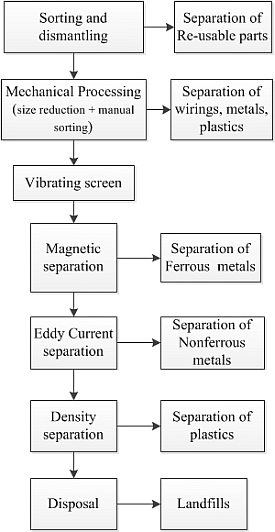Metal Extraction Processes for Electronic Waste and Existing Industrial Routes: A Review and Australian Perspective
Abstract
Share and Cite
Khaliq, A.; Rhamdhani, M.A.; Brooks, G.; Masood, S. Metal Extraction Processes for Electronic Waste and Existing Industrial Routes: A Review and Australian Perspective. Resources 2014, 3, 152-179. https://doi.org/10.3390/resources3010152
Khaliq A, Rhamdhani MA, Brooks G, Masood S. Metal Extraction Processes for Electronic Waste and Existing Industrial Routes: A Review and Australian Perspective. Resources. 2014; 3(1):152-179. https://doi.org/10.3390/resources3010152
Chicago/Turabian StyleKhaliq, Abdul, Muhammad Akbar Rhamdhani, Geoffrey Brooks, and Syed Masood. 2014. "Metal Extraction Processes for Electronic Waste and Existing Industrial Routes: A Review and Australian Perspective" Resources 3, no. 1: 152-179. https://doi.org/10.3390/resources3010152
APA StyleKhaliq, A., Rhamdhani, M. A., Brooks, G., & Masood, S. (2014). Metal Extraction Processes for Electronic Waste and Existing Industrial Routes: A Review and Australian Perspective. Resources, 3(1), 152-179. https://doi.org/10.3390/resources3010152








